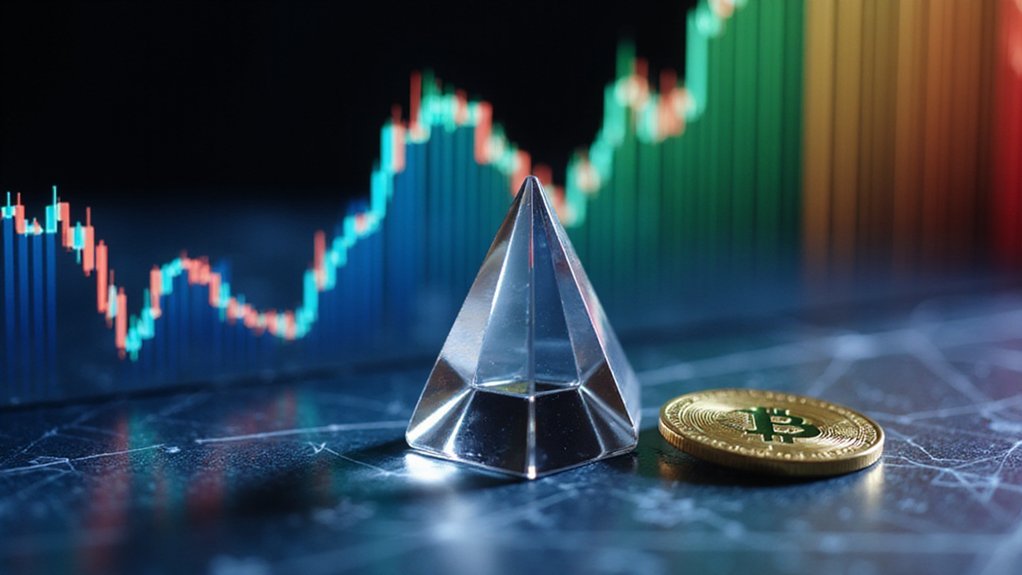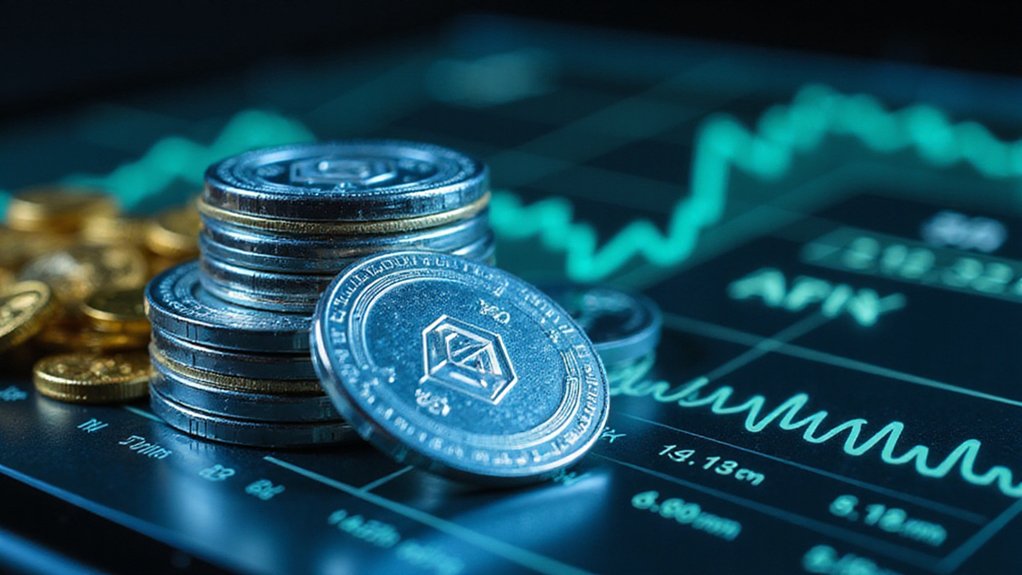Kaanch presents a surprisingly robust value proposition within today’s cryptocurrency landscape. Founded in 2023, this high-performance network combines remarkable throughput (1.4 million TPS) with near-zero gas fees while targeting the lucrative RWA tokenization sector. Its institutional-grade security infrastructure—spanning 3,600 nodes—underpins a compelling staking program yielding up to 119% APY. Analysts project potential 100x returns by 2025, with price targets ranging from $0.045-$0.16—a risk-reward ratio that warrants serious consideration from discerning investors.

Why has Kaanch Network—a relative newcomer in the overcrowded blockchain arena—captured the attention of savvy cryptocurrency investors seeking the elusive “next big thing”?
Founded in 2023 by Rahul Kumar and Ved Singh, this emerging platform distinguishes itself through remarkable technical specifications that dwarf most competitors: 1.4 million transactions per second, 0.8-second block times, and near-zero gas fees.
Such metrics aren’t merely academic; they represent fundamental infrastructure requirements for genuine mass adoption (that seemingly perpetual chimera chased by blockchain enthusiasts since Bitcoin’s inception).
The network’s approach to Real-World Asset tokenization offers particularly compelling investment logic.
Kaanch’s RWA tokenization unlocks illiquid assets, delivering both democratized market access and tangible value backing—a rare combination in blockchain investments.
By enabling fractional ownership of traditionally illiquid assets—real estate, commodities, and luxury items—Kaanch democratizes access to exclusive markets while simultaneously addressing one of cryptocurrency’s persistent criticisms: the absence of tangible value underpinning digital assets.
This RWA focus positions Kaanch at the intersection of traditional finance and blockchain innovation, potentially capturing institutional capital flows seeking regulated exposure to decentralized technologies.
Early investors benefit from a dual-incentive structure.
The presale mechanics (with progressive price increases) reward early participation, while the staking program—offering up to 119% APY—creates a virtuous cycle: staked tokens reduce circulating supply, potentially supporting price appreciation¹.
The decentralized security infrastructure, comprising 3,600 nodes, mitigates concentration risk while maintaining institutional-grade protection.
Industry analysts’ projections of “100x potential” should be viewed through appropriately skeptical lenses; however, the fundamental value proposition—combining scalability, real-world applications, and accessible entry pricing—presents a compelling risk-reward profile.
The projected 2025 price range ($0.045–$0.16) suggests significant upside potential, though such forecasts invariably contain substantial speculative elements.
For investors seeking exposure to blockchain’s transformative potential beyond the saturated Layer-1 marketplace, Kaanch represents an intriguing proposition—offering technical superiority, practical applications, and favorable tokenomics at an early-stage valuation.
The question isn’t whether Kaanch will revolutionize finance, but whether its innovative approach can capture sufficient market share in an increasingly competitive landscape.
¹Though this mechanism also introduces potential volatility during unstaking periods.
Frequently Asked Questions
How Does Kaanch Differ From Traditional Cryptocurrency Analysis Tools?
Kaanch transcends traditional crypto analysis tools through its infrastructure-oriented approach rather than mere market analysis.
While conventional tools focus on price metrics and historical trends, Kaanch’s DPoS consensus enables 1.4 million TPS with 0.8-second finality, supporting real-time applications at scale.
Its ecosystem incorporates RWA tokenization, cross-chain interoperability, and AI-driven solutions—capabilities that standard analytics platforms (fixated on retail speculation rather than institutional utility) simply cannot match.
Importantly, its DAO governance further differentiates it from passive analysis instruments.
Can Kaanch Predict Market Crashes or Major Corrections?
Kaanch Network does not function as a crystal ball for market crashes or corrections.
While its technical fundamentals (high TPS, decentralization) may enhance resilience during turbulence, $KNCH’s price movements remain reactive rather than predictive.
The network’s volatility—swinging from $0.045 to $0.16—reflects standard crypto market sensitivity rather than oracular capabilities.
Even with robust validator infrastructure and interoperability, Kaanch lacks the analytical framework necessary to forecast systemic downturns with any statistical reliability.
What Qualifications Should a Kaanch Advisor Have?
A Kaanch advisor should possess a bachelor’s degree in business, finance, or blockchain-related fields, complemented by relevant certifications.
Beyond credentials, they need demonstrable experience in cryptocurrency analysis, in-depth blockchain knowledge, and regulatory awareness.
Their toolkit must include sharp analytical abilities, risk management expertise, and technical proficiency with trading platforms.
Perhaps most essentially, they should maintain current knowledge of market developments—after all, yesterday’s crypto wisdom often becomes tomorrow’s cautionary tale.
Is Kaanch Relevant for Defi and NFT Investments?
Kaanch’s relevance to DeFi and NFT investments is evident in its technical architecture.
With 1.4 million TPS throughput and sub-second finality, it addresses the performance bottlenecks that plague many blockchain platforms.
Its microscopic transaction fees ($0.0001) make frequent DeFi interactions economically viable, while the RWA tokenization framework introduces compelling synergies between physical assets and digital markets.
For investors seeking infrastructure plays in these sectors, Kaanch merits serious consideration.
How Often Should Kaanch Strategies Be Reassessed?
Kaanch strategies deserve quarterly thorough reassessments (aligning with macroeconomic shifts), supplemented by event-triggered reviews when significant developments occur.
Monthly monitoring captures volatility-driven opportunities, while technological advances and regulatory changes necessitate immediate tactical adjustments.
This balanced cadence—fixed schedule plus responsive reviews—optimizes position management across market cycles.
The savvy investor will, naturally, maintain continuous awareness of on-chain metrics and governance proposals between formal reassessments, rather than succumbing to calendar-bound myopia.









